Key takeaways
- Paranormal infotainment captivates by blending storytelling with unexplained phenomena, stirring curiosity and reflection.
- Fae in folklore symbolize complex moral lessons, offering insight into human psychology and the unpredictability of nature.
- Themed narratives in fae stories emphasize enchantment vs. danger, boundaries, and transformation, mirroring real-life experiences and decisions.
- Engaging with fae tales through various media and personal reflections deepens understanding and appreciation of folklore’s relevance in daily life.
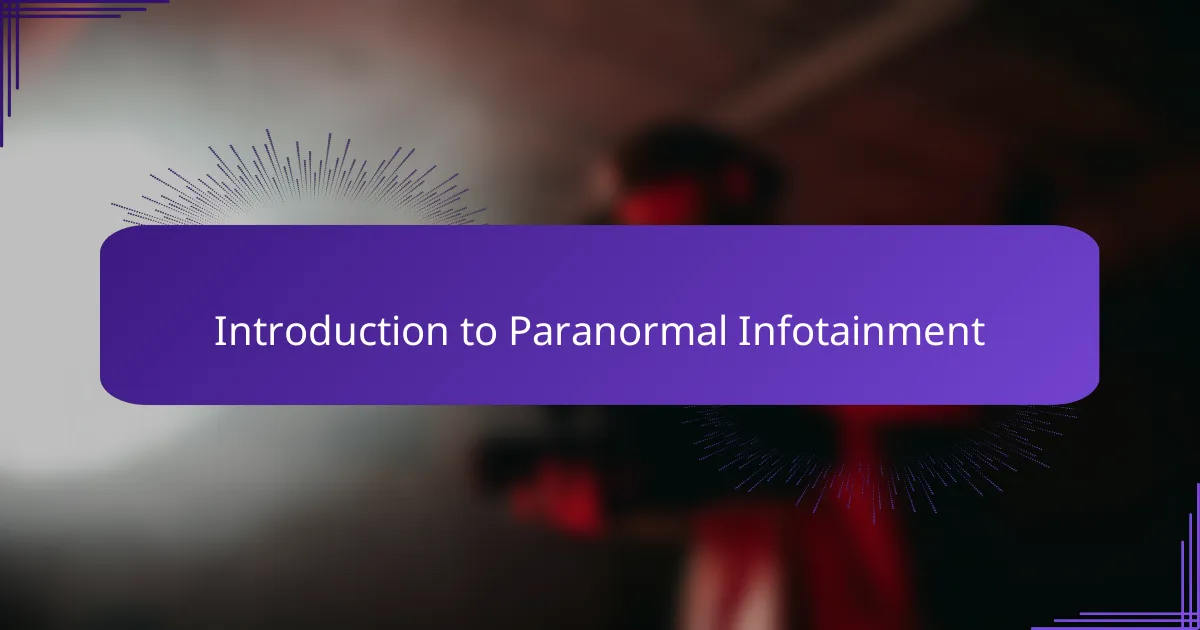
Introduction to Paranormal Infotainment
Paranormal infotainment has always fascinated me because it blends storytelling with unexplained phenomena in a way that sparks curiosity and wonder. Have you ever found yourself glued to a tale that feels both eerie and captivating, making you question what lies beyond our everyday reality? For me, it’s that delicate mix of facts, folklore, and mystery that keeps the experience thrilling and deeply personal.

Understanding the Fae in Folklore
The fae have always struck me as more than just mythical creatures; they embody the mysteries of nature itself, woven into countless folktales across cultures. I remember reading about the changelings—how fae would swap human babies with their own— and feeling this mix of awe and unease that still lingers when I think about the thin veil between our world and theirs. Doesn’t it make you wonder how much of these stories sprang from real fears and hopes passed down through generations?
What fascinates me most is how the fae aren’t simply good or evil; they’re complex beings with their own rules and moods, reflecting the unpredictable aspects of life. I’ve noticed that in folklore, they often represent nature’s power to enchant or punish, depending on human behavior. This duality makes me question whether these tales were early ways to explain the unknown forces that shaped people’s lives and surroundings.
When you dive deeper, you realize that the fae stories serve as cautionary tales, moral lessons, and windows into ancient human psychology. I sometimes catch myself thinking about those warnings embedded in fae folklore—isn’t it intriguing how stories about a hidden, magical realm help us navigate our very real world? That blend of fantasy and life wisdom is what makes understanding the fae in folklore so endlessly captivating to me.
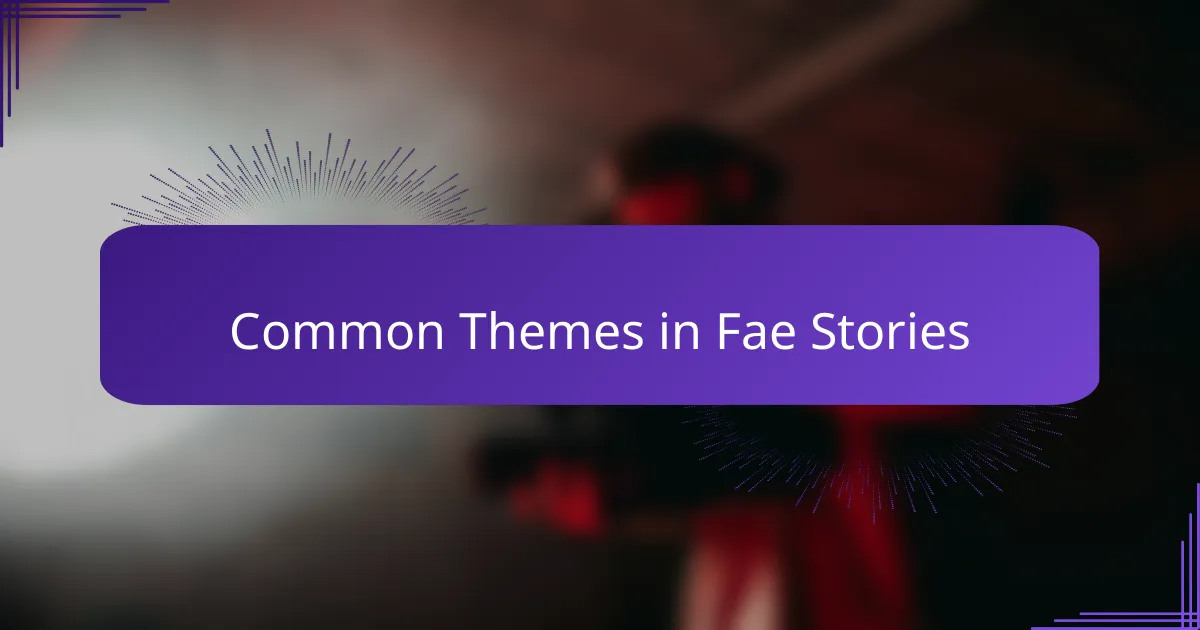
Common Themes in Fae Stories
One common thread I’ve found in fae stories is the constant interplay between enchantment and danger. It’s like these tales remind us that beauty can be beguiling but also treacherous—a lesson I’ve felt echoed in my own experiences with the unknown. Have you ever felt drawn to something magical, only to sense an undercurrent of risk? That tension feels at the heart of so many fae narratives.
Another theme that caught my attention is the idea of boundaries—the thin lines between the human world and the fae realm. This boundary isn’t just physical but moral and emotional, too, shaping how characters in these stories interact with the unseen. I can’t help but think this reflects our own struggles to respect limits, whether with nature, others, or ourselves.
Then there’s the recurring presence of transformation and trickery. I remember reading a story where a trusted friend turned out to be a fae in disguise, which stirred my curiosity and suspicion at once. These motifs seem to echo life’s unpredictability, teaching us to be wary but also open to change. Isn’t it fascinating how the fae embody both the allure and the caution we live by every day?

Exploring Different Media on Fae Tales
When I first started exploring fae tales across different media, I was amazed at how each format brought its own flavor to these stories. Reading a well-worn book of folklore felt intimate, like whispering secrets across generations, while hearing a podcast added a new layer of atmosphere with voices that made the fae feel almost tangible. Have you noticed how a simple change in medium can shift your whole experience of a story?
Watching films and animated adaptations opened my eyes to the visual magic of the fae world—the shimmering lights, the eerie forests, and mischievous expressions that really brought the characters to life. Yet, sometimes I found that these portrayals simplified the complexity I loved in the original tales, which made me appreciate the depth of traditional storytelling even more. Isn’t it interesting how visuals can both illuminate and limit imagination?
What truly captivated me was discovering fan art and online communities sharing personal interpretations and retellings of fae encounters. The way people blend modern perspectives with ancient myths enriched my understanding and sparked my curiosity about how these stories evolve with each retelling. Have you ever found that connecting with others’ experiences deepens your own engagement with folklore? For me, it’s like stepping into a collective dream where the fae still dance at the edges of reality.
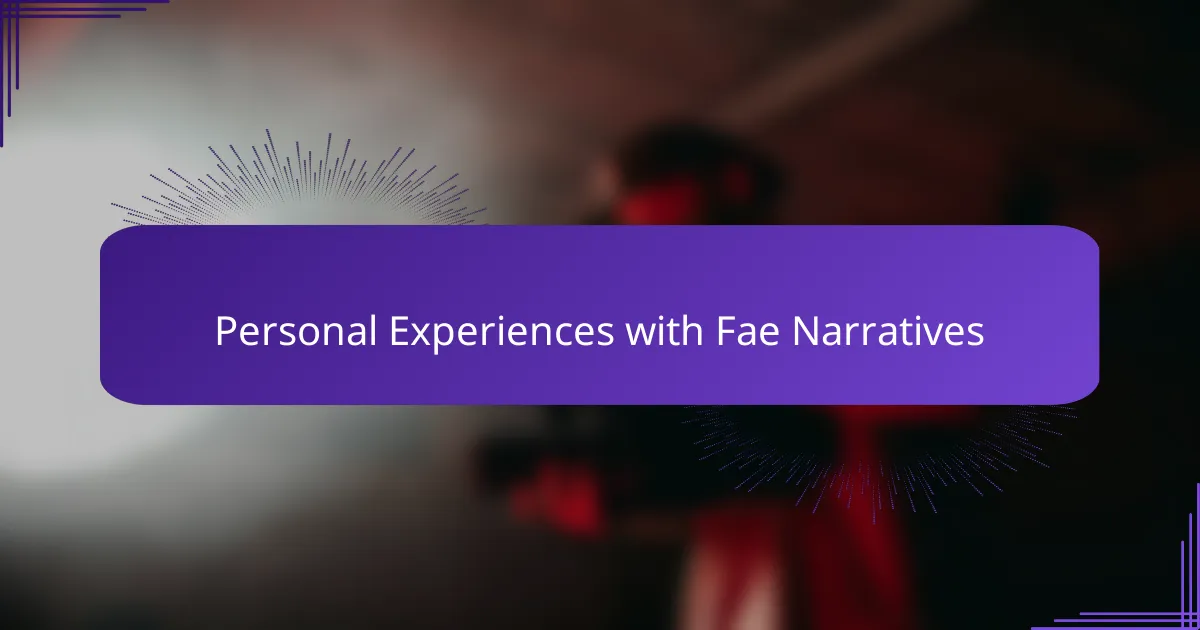
Personal Experiences with Fae Narratives
I recall the first time I stumbled upon a fae narrative that felt more than just a story—it was as if the words were tapping into something beneath my everyday awareness. There was this eerie sense that these tales weren’t just entertainment but invitations to imagine a world where enchantment and danger coexisted, much like parts of my own life. Have you ever had a story sneak under your skin like that?
One moment that stuck with me was reading about a fae crossroads meeting, where choices carried magical weight and consequences unseen. It made me reflect on decisions in my life that felt equally pivotal yet mysterious in outcome. Isn’t it strange how myths about otherworldly beings can mirror our very human struggles with uncertainty and consequence?
Sometimes, when I share fae stories with friends, I notice their reactions shift from skepticism to fascination, especially when the tales touch on themes of trickery or transformation. It reminds me how these narratives tap into universal feelings—trust, betrayal, wonder—that everyone can relate to, regardless of belief. Have you noticed how personal connections to folklore can reveal deeper human truths, beyond the magic and mischief?
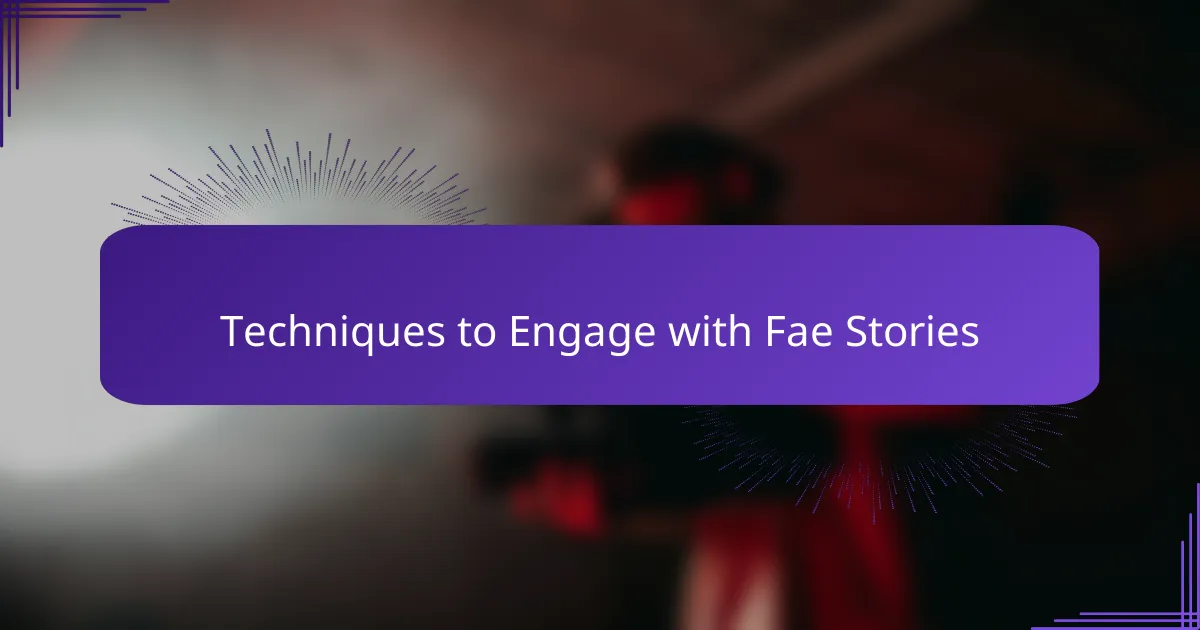
Techniques to Engage with Fae Stories
One technique I’ve found powerful is reading fae stories aloud, letting the rhythm and tone carry the enchantment. Have you ever noticed how hearing a story spoken can make the characters and setting feel more alive? For me, it transforms the experience from mere reading into a shared moment with the unseen world.
Another method I use is journaling or sketching impressions immediately after engaging with a fae tale. This helps me capture the emotions and symbols that resonate most deeply, which often reveal personal connections I might miss otherwise. It’s like creating my own map between the human and fae realms, personalized and meaningful.
Sometimes, I like to immerse myself in nature while pondering these stories — a quiet forest walk or sitting by a babbling brook. There’s something about placing myself in spaces that echo the fae’s domain that deepens my engagement and opens me to subtle inspirations. Have you tried blending physical environment with storytelling to enrich your experience? I find it unlocks a whole new layer of enchantment.
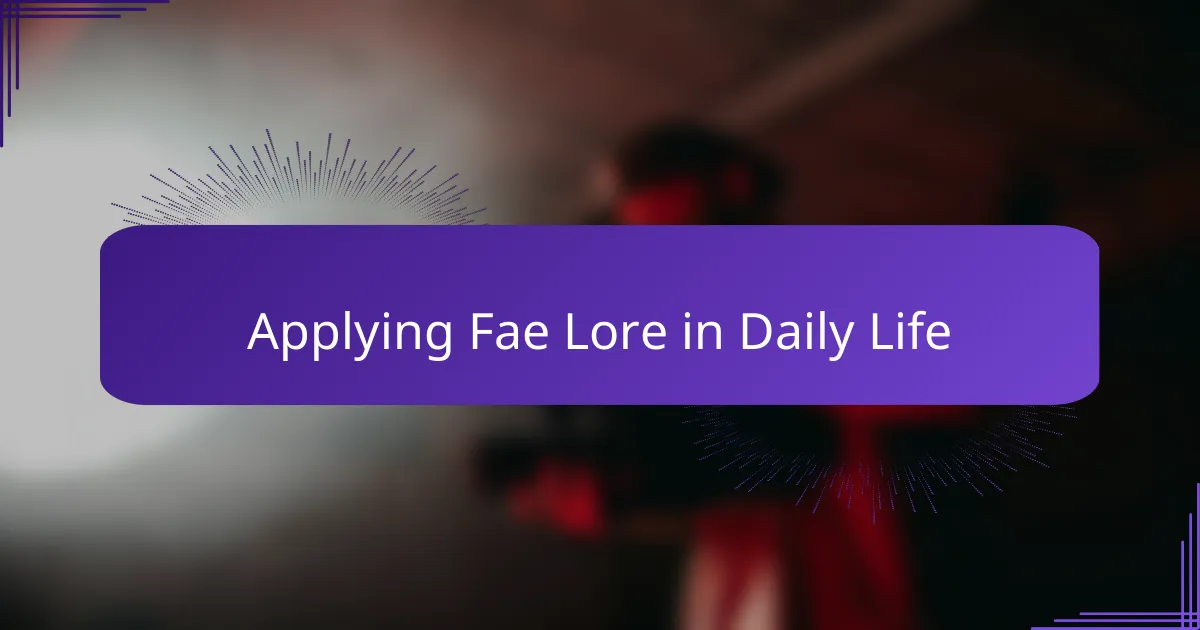
Applying Fae Lore in Daily Life
Applying fae lore in daily life often feels like weaving a thread of magic through ordinary moments. I’ve found that carrying a small charm or token inspired by fae tales—like a pressed flower or a tiny crystal—can subtly shift my awareness, reminding me to stay open to the unexpected twists the day might bring. Have you ever noticed how a simple object can transform your mindset, almost like inviting a whisper of the fae into your routine?
I’ve also tried respecting the boundaries that fae stories emphasize, such as being mindful of when and where I walk outdoors, especially near natural spaces. It’s not just about superstition; it feels like honoring the unseen worlds that these tales hint at. This mindfulness has made me more present and appreciative, turning mundane strolls into moments of quiet reverence. Could this be a modern way of practicing the old respect for nature and its mysteries?
Sometimes, I catch myself using fae lore as a personal metaphor. When faced with tricky decisions, I imagine standing at a crossroads like those fae meetings that weigh choices with unseen consequences. It’s a small ritual, but it helps me pause and consider what path might hold hidden challenges or gifts. Have you found that viewing life’s dilemmas through the lens of folklore can lend clarity or even a touch of wonder?